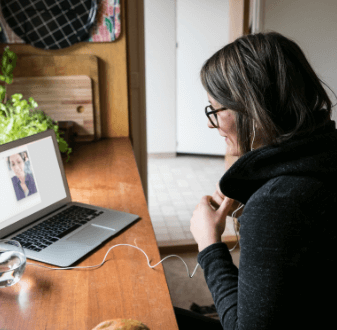What is telehealth?
Telehealth is the delivery of healthcare services via telecommunication technology. This includes phones and videoconferencing platforms such as Zoom and FaceTime. Where distance is a factor, telehealth connects patients and providers, and improves access to support services and health education.
It's not all phone calls and video consultation, though. As well as real-time telehealth, there are two additional methods of delivering services remotely: store-and-forward and remote patient monitoring. The former involves the collection of a patient's clinical information, which is sent away electronically for evaluation. The latter relies on information technology to gather and track a patient's medical data away from traditional healthcare settings.
Is Telehealth here to stay?
Telehealth isn't a complete substitute for face-to-face consultations and examinations, but for many patients who need to access care. It is not just convenient, it is essential.. In a country as vast as Australia's, dotted with remote and rural communities, telehealth is, quite literally, a lifesaver.
Of course, the pandemic has forced the industry to adopt telehealth at an unprecedented rate. From GPs and psychologists to physiotherapists and social workers, practitioners across all fields are delivering virtual health care. It's proving an essential tool, not just in our response to COVID-19, but for our health system moving forward.
In March, the Australian Government recognised the critical role of telehealth and funded billions in services under the Medicare Benefits Schedule (MBS). Addressing its success and demand, it has since extended services for all Australians and committed to millions in funding for permanent telehealth infrastructure.
"It's inevitable that telehealth will be part of the normal suite of tools we will use as practitioners," says Professor Justin Beilby, Deputy Vice Chancellor Research at Torrens University, and a general practitioner.
Incorporate telehealth into your practice
At Torrens University Australia, we champion the power of people to connect the world for good. In response to the current climate, that has meant reshaping the way education is delivered and responding to topical issues and innovations to offer future-focused courses that go towards transforming the lives of individuals and communities.When the pandemic struck, we recognised early on that not only did our students need to swiftly develop skills to deliver quality healthcare remotely, but there would be a need for practicing health professionals to do the same. And we knew these skills would remain vital and relevant in the future of health. Swiftly, our Health faculty and Product Innovation team sprang into action to find a solution.
To that end, we've just added Connecting with Telehealth to our extensive suite of free, on-demand short courses. The one-hour course is designed to facilitate better understanding of telehealth services among health practitioners, academics and students alike. Part of that involves highlighting its benefits and challenges for all involved.
"Many people are quite comfortable with telehealth conversations; they trust the information that's been given to themselves and their conditions," says Professor Beilby.
"Although, a lot of the younger people are more are more interested to make sure their confidentiality and their privacy has been protected. So, it's really important you think about the patient - their age, their interests, their priorities, but very importantly, their conditions."
Connecting with Telehealth is an introduction to telehealth essentials and provides a well-rounded overview of the service's applications, operations and ethical implications in a clinical context. It combines academic literature, interactive lessons, government insight and policy with expert advice from practitioners.
With a deeper understanding of its potential, students and professionals will be better placed to confidently incorporate telehealth into their current or future practice.




